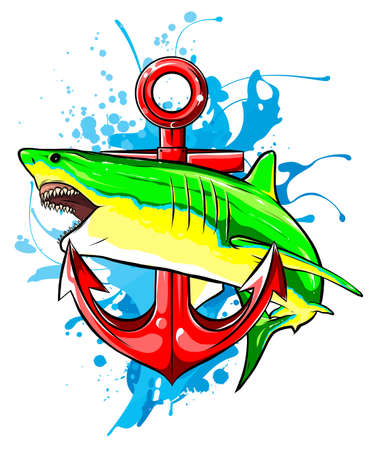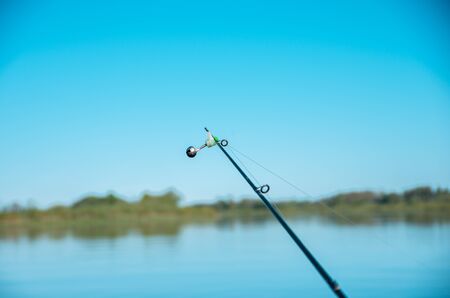1. Understanding Trolling Speed Basics
When it comes to trolling in sportfishing, speed isnt just about how fast your boat is moving—its a key factor that can make or break your chances of landing fish. Trolling speed refers to the rate at which your bait or lure moves through the water behind a moving boat. This speed affects how natural your presentation looks to the fish, and whether it triggers a strike or gets ignored.
What Is Trolling Speed?
Trolling speed is usually measured in miles per hour (mph) and varies widely depending on what kind of fish youre targeting. For example, big-game species like marlin or tuna may respond better to faster speeds, while slower-moving fish like lake trout prefer a more leisurely pace.
How Target Species Affects Trolling Speed
Different fish species have different feeding behaviors and swimming speeds. Heres a quick breakdown of common target species and their ideal trolling speeds:
| Species | Ideal Trolling Speed (mph) |
|---|---|
| Lake Trout | 1.5 – 2.5 |
| Walleye | 1.0 – 2.0 |
| Salmon | 1.8 – 3.0 |
| Mahi-Mahi (Dolphinfish) | 4.0 – 7.0 |
| Tuna | 5.0 – 9.0+ |
The Role of Water Conditions
Your trolling speed should also adapt to current water conditions. If the water is colder, fish tend to be less active and may prefer a slower-moving bait. In warmer waters, fish are more energetic and might chase down faster presentations. Wind, currents, and wave action can also impact how your lure behaves at different speeds.
Tips for Adjusting to Water Conditions:
- Cold water: Slow down your speed to match sluggish fish activity.
- Choppy water: Use slightly heavier lures to maintain control at higher speeds.
- Strong current: Consider trolling against or across the current for better bait presentation.
The Impact of Equipment on Speed Control
Your trolling setup plays a big part in how well you can manage speed. Here are some gear-related factors that affect trolling performance:
- Boat type: Smaller boats may struggle to maintain consistent slow speeds, especially in wind or chop.
- Motor setup: Using a kicker motor or trolling motor gives you finer control over slower speeds.
- Lure design: Some lures are designed for specific speed ranges—running them too fast or too slow can kill their action.
- Divers & planers: These tools let you adjust depth without increasing speed too much.
A Quick Tip:
If youre not getting bites, dont be afraid to experiment with your speed in small increments—sometimes even half an mph can make all the difference!
Trolling isn’t just about dragging lures behind your boat—it’s about understanding how every detail, especially speed, plays into the behavior of your target fish. Dialing in the right trolling speed based on species, conditions, and gear is the first step toward more successful days on the water.
2. How Speed Influences Fish Behavior
When youre trolling, the speed of your boat isn’t just about covering water—it plays a big role in how fish react to your bait. Different species respond differently depending on their natural instincts, reaction time, and feeding habits. Understanding this behavior can help you fine-tune your trolling speed for better results.
Reaction Times Matter
Just like humans, fish have varying reaction times. Faster trolling speeds give fish less time to inspect a lure, which can trigger a quick strike from aggressive predators. On the flip side, slower speeds allow more cautious fish to observe the bait before deciding whether to bite or swim away.
Fish Reaction Time vs Trolling Speed
| Species | Typical Reaction Time | Recommended Trolling Speed |
|---|---|---|
| Wahoo | Fast (aggressive) | 6-12 mph |
| Tuna | Moderate to Fast | 5-8 mph |
| Mahi Mahi (Dorado) | Quick but curious | 4-7 mph |
| Lake Trout | Slower reactors | 1.5-2.5 mph |
| Salmon | Moderate | 2-3 mph |
Triggering Predatory Instincts
Certain speeds can mimic the natural movement of prey. For example, a fast-moving lure may resemble a fleeing baitfish, which can trigger an instinctive chase response in predatory fish like king mackerel or striped bass. Meanwhile, a slow-moving presentation might look like an injured or easy target—perfect for opportunistic feeders.
Avoidance vs Attraction Responses
If your trolling speed doesn’t match what a species expects from its prey, it may spook them instead of drawing them in. Fish are sensitive to unnatural movement patterns. Too fast and they might ignore it; too slow and they might lose interest or become suspicious.
Speed Tips by Species Type:
- Panfish & Bass: Stay under 3 mph for a natural presentation.
- Pelagic Predators: Go faster—6+ mph helps simulate fleeing prey.
- Bottom Dwellers: Slow and steady wins the race—1-2 mph is ideal.
The key is to experiment and adjust based on conditions, target species, and even time of day. A slight change in speed can be the difference between getting skunked or landing your personal best.

3. Matching Speed With Bait Presentation
When it comes to trolling, speed isnt just about covering water—its about making your bait look real. Different lures and baits are designed to move a certain way in the water, and if youre trolling too fast or too slow, they won’t perform like they’re supposed to. That means fewer bites and more frustration.
Understanding Lure Action at Different Speeds
Each lure type has its own sweet spot when it comes to speed. For example, crankbaits have built-in action that works best at medium speeds, while soft plastics might need a slower pace to look natural. Metal spoons and high-speed trolling lures are made for faster speeds and mimic fleeing baitfish. When your trolling speed doesn’t match the lure’s design, it can kill the presentation.
Lure Action by Type and Ideal Trolling Speed
| Lure Type | Ideal Trolling Speed (mph) | Action Description |
|---|---|---|
| Crankbaits | 2.0 – 3.5 | Tight wobble; mimics injured baitfish |
| Spoons | 2.5 – 5.0 | Fluttering motion; imitates fleeing prey |
| Soft Plastics | 1.0 – 2.0 | Subtle tail movement; looks like natural swim |
| Swimbaits | 1.5 – 3.0 | Realistic swimming action; works best at steady speeds |
| Plugs (e.g., Rapalas) | 2.0 – 4.0 | Darting side-to-side action; simulates distressed fish |
The Importance of Size and Natural Movement
Bigger baits usually need more power to move right, so they often require a higher trolling speed to keep their action lifelike. Smaller baits are more delicate and may perform better at slower speeds. Also, think about the kind of forage your target species is chasing—match your lure not only in appearance but also in how it moves.
Pro Tip:
If you notice your lure spinning or behaving unnaturally, chances are your trolling speed is off—or you’re using the wrong size or style for your current setup.
Tuning Your Setup for Better Results
The key is experimenting with both speed and presentation until everything clicks. Watch how your lure performs next to the boat before letting it out, or use an underwater camera if you have one. Once you find that perfect combo of speed and action, you’ll start seeing more consistent catches.
4. Adapting to Environmental Variables
Trolling speed isnt a one-size-fits-all setting. To consistently land fish, you need to adjust your speed based on the environment youre fishing in. Factors like water temperature, current strength, wind direction, and light conditions all play a role in how fast you should troll. Understanding how these elements interact can help you dial in the perfect trolling speed and put more fish in the boat.
Water Temperature
Fish are cold-blooded, so their activity levels are directly influenced by the temperature of the water. In colder water, their metabolism slows down, making them less likely to chase fast-moving lures. In warmer water, they become more active and willing to strike faster presentations.
| Water Temperature (°F) | Fish Activity Level | Recommended Trolling Speed |
|---|---|---|
| Below 50°F | Low | 1.0 – 1.8 mph |
| 50°F – 65°F | Moderate | 1.5 – 2.5 mph |
| 65°F – 75°F | High | 2.0 – 3.5 mph |
| Above 75°F | Very High | 2.5 – 4.0+ mph |
Currents and Wind
If youre trolling with or against a strong current or wind, it can impact your actual lure speed underwater — not just your boats GPS speed. For example, trolling into a current may require increasing your throttle to maintain the same lure action. On the flip side, trolling with the current might mean slowing down so your bait doesn’t zip past uninterested fish.
Tips:
- Trolling into the wind/current: Slightly increase speed to maintain lure action.
- Trolling with the wind/current: Reduce boat speed to avoid unnatural lure movement.
Light Conditions
The amount of sunlight can influence fish behavior and their willingness to chase fast-moving lures. On bright sunny days, fish may be more cautious and prefer slower presentations. During low-light periods such as dawn, dusk, or overcast days, they’re often more aggressive and likely to hit faster-moving bait.
General Guidelines for Light Conditions:
- Bright Sunlight: Slow down your trolling speed slightly; fish may be holding deeper or tighter to cover.
- Dawn/Dusk/Overcast: Increase trolling speed; fish tend to feed more aggressively during these times.
The Takeaway on Environmental Variables
Your trolling speed should always be flexible depending on whats happening around you. Keep an eye on water temps, wind patterns, currents, and lighting conditions — then tweak your approach accordingly. Being adaptable out on the water is one of the best ways to stay ahead of changing fish behavior and improve your catch rate.
5. Pro Tips and Real-World Examples
Experienced anglers know that trolling speed can make or break your day on the water. Whether youre chasing walleye in the Great Lakes or mahi-mahi off the Florida Keys, dialing in the right speed is critical. Here are some expert tips, regional insights, and real-life success stories that highlight how adjusting trolling speed can lead to better catch rates—and sometimes even trophy fish.
🎣 Expert Tips from Seasoned Anglers
- Start Slow and Adjust: Begin your troll at a slower speed (around 1.5 to 2.0 mph) and gradually increase until you find the sweet spot where bites start happening.
- Watch Your Lure Action: Keep an eye on how your lure behaves at different speeds. If it spins out or moves unnaturally, youre probably going too fast.
- Use GPS for Speed Control: GPS-enabled trolling motors can help maintain consistent speeds, especially when wind or current is pushing your boat around.
📍 Regional Speed Trends Across U.S. Waters
| Region | Target Species | Typical Trolling Speed | Pro Tip |
|---|---|---|---|
| Great Lakes (Lake Erie, Lake Michigan) | Walleye, Salmon | 1.5 – 2.5 mph | Use planer boards to spread lines at slower speeds for more coverage. |
| Southeast (Florida Keys) | Mahi-Mahi, Tuna | 4 – 7 mph | Troll faster with bright skirts to mimic fleeing baitfish. |
| Northeast (Cape Cod) | Striped Bass, Bluefish | 2 – 3 mph | S-shaped trolling patterns help cover more ground and trigger reaction strikes. |
| Pacific Northwest (Puget Sound) | Chinook Salmon | 1.8 – 3.0 mph | Add dodgers or flashers at slower speeds for added attraction. |
🏆 Real-Life Examples of Speed Making the Difference
Lunker Walleye on Lake Erie
Ohio angler Mark T. was struggling during a summer outing until he slowed his troll from 2.5 mph to just under 1.8 mph after noticing fish stacked deep on his sonar. Within minutes, he hooked into a personal-best 11-pound walleye using a slow-trolled crawler harness.
Mahi Madness in Marathon, FL
A charter captain in Marathon noticed his clients were only getting short strikes while trolling at their usual 6 mph pace. He sped up to nearly 8 mph and switched to high-speed lures—suddenly, the hits turned into hook-ups, landing several mahi over 20 pounds that day.
Cape Cod Striper Success
An early morning trip off Cape Cod had little action until local guide Sarah B. zigzagged her troll pattern and dropped her speed slightly below 2 mph around structure points. That small adjustment produced multiple keeper-sized striped bass before noon.
⚙️ Quick Reference: When to Adjust Your Speed
| If You Notice… | Try This Adjustment |
|---|---|
| No strikes but seeing fish on sonar | Slow down by 0.5 mph increments |
| Lures spinning or acting erratic | Reduce speed to improve presentation |
| Baitfish visibly fleeing near surface | Increase speed to mimic natural prey movement |
| Bites turning into short strikes only | Tweak speed slightly up/down and check hook sharpness |
The next time youre out trolling, remember that minor tweaks in speed can lead to major wins on the water. Its not just about covering ground—its about matching what the fish want in that moment.


